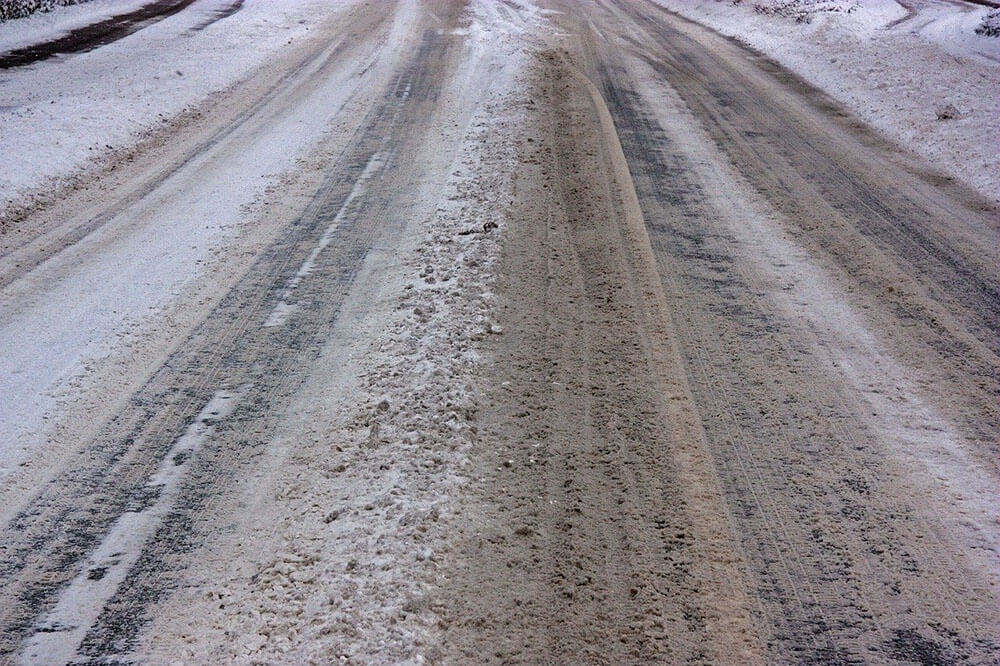How Dangerous Is Driving Through Slush?

There’s no question that driving through slush can be dangerous. Slick, slippery, icy, wet, slushy roads present significant hazards to motorists attempting to navigate safely through these tricky winter pitfalls. Our state is no stranger to the perils winter brings to drivers in the northern parts of our nation. As Illinois drivers, we are well familiar with the risks associated with snow and ice. But how dangerous is driving through slush?
Are Slushy Roads Slippery?
Slush is a mixture of partially melted snow and ice. Slushy roads can be exceptionally slippery and hazardous to drive on. After a storm, periods of rising and falling temperatures can cause an accumulated wintry mix of rain, sleet, ice, and snow to cover the ground. On winter roads, this can combine with dirt, debris, salt, and the black grime of traffic exhaust fumes. Motorists are often left to deal with a dangerous sludge glazing city streets.
Driving through slush is dangerous because it forms a thick, slippery coating on the road. Following a winter storm, precipitation may go through cycles of melting and refreezing. This is not only slippery but also unstable, making it difficult for motorists to anticipate and adequately prepare for road conditions. Unlike solid ice or snow, slushy roads are alternately wet, frozen, slippery, and piled with sediment.
Is It More Dangerous to Drive in Snow or Slush?
Exactly how dangerous is driving through slush? Like ice and snow, slush decreases road traction and makes vehicle control, steering, and braking more challenging for drivers. Accidents are more likely to occur under adverse winter weather conditions like these. Visibility is decreased, roads are slick, and many drivers (and their vehicles) aren’t well prepared to deal safely with the elements. For this reason, winter is the most hazardous season for driving in areas affected by snow, sleet, and ice.
But slush by its nature is a half-frozen semi-liquid, and as such can be more dangerous than snow for several reasons. As a clinging mass, slush grabs onto and sticks to tires, decreasing traction and increasing the likelihood of a spinout. It can fill cracks in the road and in the tread of tires and freeze there, forming a mass of stuck ice. It also easily forms piles between lanes and at intersections that can later freeze when temperatures fall at night.
One of the most dangerous aspects of slush is that it can conceal ice. Drivers may assume that the presence of slush means that everything is in a melted state. Most of the time, however, there is a frozen layer or patches of ice underneath. What may appear as simply a wet, soggy nuisance is often a veneer over a much more dangerous surface.
How Do You Drive in Slushy Conditions?
If you need to take your car on the roads for work or errands after snow, sleet, and rain, you may be facing slushy conditions. Learning how to drive in slush is important for every driver, as these conditions pose challenges that other adverse weather conditions don’t. When driving in slush, keep in mind that what you can see immediately on the road surface is, metaphorically, the tip of the iceberg. Expect that there may be ice or packed snow hiding beneath the top layer of slushy sludge.
Here are a few tips for driving on slushy roads:
- Accelerate gradually so your tires have time to gain traction on the road beneath. Accelerating too quickly can cause your car to spin out and you to lose control of the steering wheel.
- Brake gently using slow, even motions on the brake. Don’t attempt to stop suddenly or turn sharply. Resist the urge to slam on the brakes if you start to skid or slide. Instead, ease off the accelerator and brake gently while slowing guiding your steering wheel.
- Drive slowly, even slower than you think is necessary. Posted speed limits are only for the best driving conditions. The extreme slipperiness of wet ice makes it difficult for your tires to grab onto the road. Speeding will easily result in fishtailing, spinning out, sliding, and an inability to stop when you need to.
- Stay in a single lane unless it is absolutely necessary to change lanes. When you drive, slush builds up along the outside of your tires as you carve a path through ice and snow. Attempting to cross over this accumulated mound of sludge can be risky at high speeds. If you do need to turn or change lanes, try to pick a spot with the least amount of slush.
- Don’t follow too closely. Tailgating another vehicle on a slushy road is a quick path to a rear-end collision. While normal conditions allow for about three seconds between vehicles, that distance should be increased to about six to eight seconds on snowy, icy, or slushy roads. Aim for at least four vehicle lengths between you and the car in front of you.
- Watch out for icy patches that freeze first and melt last. These are usually found on bridges, overpasses, and places that receive the least sunlight. Black ice (a thin layer of ice unnoticeable on the black road surface) is a great danger to drivers who assume the roads to be clearer than they are. When slush puts a cover on the road, there is a good chance icy patches remain underneath.
Because winter weather like slush creates known hazards on the road, drivers have an obligation to do their best to keep themselves and others safe. This includes cleaning ice and snow off their vehicle before driving, adhering to all traffic laws regarding adverse weather, and driving as slowly and cautiously as the conditions demand. Drivers who fail to take necessary precautions and cause harm to others may be liable for damages.
If you were injured in a motor vehicle accident caused by another driver’s negligence, you may be entitled to compensation to cover your medical expenses, lost wages, vehicle damage, and other losses. If you believe your accident may have been caused by motorist negligence, come talk to the experienced car accident attorney team at Prince Law Firm. We offer free case evaluations to help you determine your legal options after an accident.










